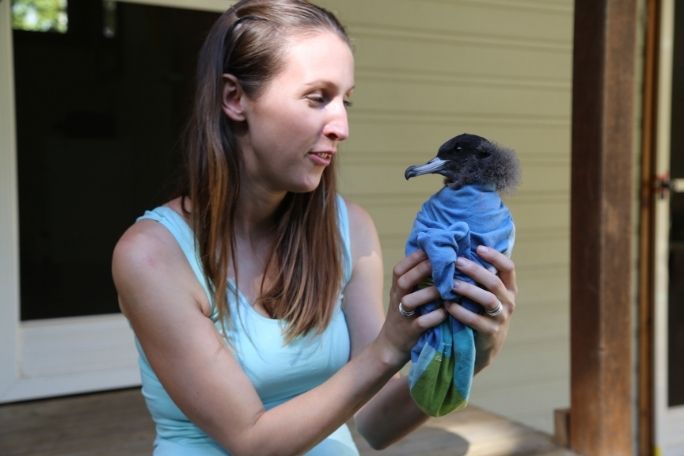Lesson summary
This lesson incorporates clips from Blue The Film as learning inspiration. In this finding out lesson, students will examine biographical and reflective language and text structures. They will consider the experiences the experiences of Dr Jennifer Lavers and how she has worked to make a difference to the environment. Using a selection of thinking, planning and writing tools, students will analyse the role of biographical and reflective language in communicating with audiences to inspire them to take action. Students will then produce a short written biography of Dr Jennifer Lavers and her achievements and work with seabird colonies.
Learning intentions:
Students will...
- understand how biographical texts can be used to communicate individual stories and inspire action among audiences.
- enhance their skills in making language choices that communicate both their understanding of individual stories and the actions and achievements can inspire audiences.
Success criteria:
Students can...
- describe and explain the language and structural features of biographies, providing examples of how they can communicate important information about individuals and their achievements.
- use biographical language and text structures to write their own biography of Dr Jennifer Lavers, demonstrating their use of language to communicate information about Dr Jennifer Lavers, her work and achievements.
Lesson guides and printables
Lesson details
Curriculum Mapping
Australian curriculum (8.4) content descriptions:
Year 8 English:
- Analyse and evaluate the ways that text structures and language features vary according to the purpose of the text and the ways that referenced sources add authority to a text (ACELY1732)
- Recognise that vocabulary choices contribute to the specificity, abstraction and style of texts (ACELA1547)
Syllabus outcomes: EN4-3B
General capabilities: Literacy, Personal and Social Capability, Ethical Understanding, Critical and Creative Thinking, Information and Communication Technology (ICT) Capability.
Cross-curriculum priority: Sustainability
Relevant parts of Year 8 English achievement standards: Students explain how language features, images and vocabulary are used to represent different ideas and issues in texts.They listen for and identify different emphases in texts, using that understanding to elaborate on discussions. Students understand how the selection of language features can be used for particular purposes and effects. They explain the effectiveness of language choices they make to influence the audience. Students create texts for different purposes, selecting language to influence audience response. They take into account intended purposes and the needs and interests of audiences. Students demonstrate understanding of grammar, select vocabulary for effect and use accurate spelling and punctuation.
Unit of work: Blue The Film: Our Oceans and Our Future
Time required: 90 mins.
Resources required
- Student Worksheet – one per student
- Device capable of presenting a website, clip and digital worksheet to the class
- Seabirds Stimulus Images Sheet
- Biographical Writing Factsheet
- Reflective Writing Factsheet
- Jennifer Lavers Biography
- Valerie Taylor Biography
- Editing Checklist
Skills
This lesson is designed to build students’ competencies in the following skills:
- Communication
- Creativity
- Critical thinking
- Digital literacy
- Global citizenship
Additional info
Level of teacher scaffolding: Low – lead students in discussion.
Blue is a feature documentary film charting the drastic decline in the health of our oceans. With more than half of all marine life lost and the expansion of the industrialization of the seas, the film sets out the challenges we are facing and the opportunities for positive change. Blue changes the way we think about our liquid world and inspires the audience to action. Find out how to screen or download the film here. Along with the film is an ambitious global campaign to create advocacy and behaviour change through the #oceanguardian movement. To become an ocean guardian, see the website.


Welcome back!
Don't have an account yet?
Log in with:
By signing up to Cool.org you consent and agree to Cool's privacy policy to
store, manage and process your personal information. To read more, please see
our privacy policy here(Opens in new tab).
Create your free Cool.org account.
Many of our resources are free, with an option to upgrade to Cool+ for premium content.
Already have an account?
Sign up with:
By signing up to Cool.org you consent and agree to Cool's privacy policy to
store, manage and process your personal information. To read more, please see
our privacy policy here(Opens in new tab).